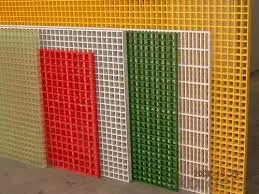
-
 Afrikaans
Afrikaans -
 Albanian
Albanian -
 Amharic
Amharic -
 Arabic
Arabic -
 Armenian
Armenian -
 Azerbaijani
Azerbaijani -
 Basque
Basque -
 Belarusian
Belarusian -
 Bengali
Bengali -
 Bosnian
Bosnian -
 Bulgarian
Bulgarian -
 Catalan
Catalan -
 Cebuano
Cebuano -
 China
China -
 China (Taiwan)
China (Taiwan) -
 Corsican
Corsican -
 Croatian
Croatian -
 Czech
Czech -
 Danish
Danish -
 Dutch
Dutch -
 English
English -
 Esperanto
Esperanto -
 Estonian
Estonian -
 Finnish
Finnish -
 French
French -
 Frisian
Frisian -
 Galician
Galician -
 Georgian
Georgian -
 German
German -
 Greek
Greek -
 Gujarati
Gujarati -
 Haitian Creole
Haitian Creole -
 hausa
hausa -
 hawaiian
hawaiian -
 Hebrew
Hebrew -
 Hindi
Hindi -
 Miao
Miao -
 Hungarian
Hungarian -
 Icelandic
Icelandic -
 igbo
igbo -
 Indonesian
Indonesian -
 irish
irish -
 Italian
Italian -
 Japanese
Japanese -
 Javanese
Javanese -
 Kannada
Kannada -
 kazakh
kazakh -
 Khmer
Khmer -
 Rwandese
Rwandese -
 Korean
Korean -
 Kurdish
Kurdish -
 Kyrgyz
Kyrgyz -
 Lao
Lao -
 Latin
Latin -
 Latvian
Latvian -
 Lithuanian
Lithuanian -
 Luxembourgish
Luxembourgish -
 Macedonian
Macedonian -
 Malgashi
Malgashi -
 Malay
Malay -
 Malayalam
Malayalam -
 Maltese
Maltese -
 Maori
Maori -
 Marathi
Marathi -
 Mongolian
Mongolian -
 Myanmar
Myanmar -
 Nepali
Nepali -
 Norwegian
Norwegian -
 Norwegian
Norwegian -
 Occitan
Occitan -
 Pashto
Pashto -
 Persian
Persian -
 Polish
Polish -
 Portuguese
Portuguese -
 Punjabi
Punjabi -
 Romanian
Romanian -
 Russian
Russian -
 Samoan
Samoan -
 Scottish Gaelic
Scottish Gaelic -
 Serbian
Serbian -
 Sesotho
Sesotho -
 Shona
Shona -
 Sindhi
Sindhi -
 Sinhala
Sinhala -
 Slovak
Slovak -
 Slovenian
Slovenian -
 Somali
Somali -
 Spanish
Spanish -
 Sundanese
Sundanese -
 Swahili
Swahili -
 Swedish
Swedish -
 Tagalog
Tagalog -
 Tajik
Tajik -
 Tamil
Tamil -
 Tatar
Tatar -
 Telugu
Telugu -
 Thai
Thai -
 Turkish
Turkish -
 Turkmen
Turkmen -
 Ukrainian
Ukrainian -
 Urdu
Urdu -
 Uighur
Uighur -
 Uzbek
Uzbek -
 Vietnamese
Vietnamese -
 Welsh
Welsh -
 Bantu
Bantu -
 Yiddish
Yiddish -
 Yoruba
Yoruba -
 Zulu
Zulu
Innovative GRP Grating Solutions for Enhanced Safety and Durability in Construction
Understanding GRP Grating A Comprehensive Guide
Glass Reinforced Plastic (GRP) grating, also known as Fiberglass Reinforced Plastic (FRP) grating, is a composite material that combines fiberglass strands with a polymer resin to create a highly durable, lightweight, and corrosion-resistant product. GRP grating is widely used in various industries due to its numerous advantages over traditional materials such as steel or aluminum. This article will delve into the features, benefits, and applications of GRP grating, highlighting why it has become a preferred choice for many industrial applications.
Features of GRP Grating
One of the key features of GRP grating is its lightweight nature. Compared to steel grating, GRP grating is significantly lighter, making it easier to handle and install. This property not only reduces labor costs but also simplifies transportation and storage.
Another important feature is the corrosion resistance of GRP grating. The materials used in its production, primarily fiberglass and resin, are inherently resistant to moisture, chemicals, and environmental elements. This makes GRP grating an ideal solution for environments where exposure to corrosive substances is common, such as chemical plants, wastewater treatment facilities, and coastal areas.
GRP grating is also designed with safety in mind. It offers excellent slip resistance due to its textured surface, making it a suitable choice for walkways, platforms, and other areas where footing is crucial. Additionally, GRP grating is non-conductive, which enhances safety in electrical applications.
Benefits of GRP Grating
The benefits of GRP grating extend beyond its features. One of the most significant advantages is its long lifespan. Unlike traditional metal grating, which can corrode, rust, or degrade over time, GRP grating maintains its structural integrity for many years with minimal maintenance. This durability translates to lower lifecycle costs and reduced downtime, as replacement or repairs are less frequent.
Another benefit of GRP grating is its design flexibility. It can be fabricated in various sizes, shapes, and colors to meet specific project requirements. This adaptability allows architects and engineers to incorporate GRP grating into diverse designs, enhancing both functionality and aesthetics.
grp grating

Moreover, GRP grating is environmentally friendly. Its production often utilizes recycled materials, and its long lifespan results in less waste being generated in the long run. Additionally, its lightweight nature reduces energy consumption during transportation.
Applications of GRP Grating
The applications of GRP grating are vast and varied, spanning multiple industries. In the construction and building industry, it is commonly used for walkways, stair treads, and platforms. Its slip-resistant surface provides additional safety in high-traffic areas.
In chemical processing, GRP grating is favored for its chemical resistance. It is often used in areas where spilled chemicals or harsh cleaning agents may be present, ensuring both safety and compliance with health standards.
Water treatment facilities also benefit from GRP grating. It is used in areas exposed to water and chemicals, providing a reliable solution that can withstand harsh conditions without degrading.
Furthermore, GRP grating is utilized in marine applications such as docks and piers, where exposure to saltwater can pose significant challenges for traditional materials. Its non-corrosive nature ensures long-lasting performance in such environments.
Conclusion
In summary, GRP grating presents an innovative and practical solution for a myriad of applications. With its lightweight, corrosion-resistant, and slip-resistant features, it outperforms traditional materials in many respects. As industries continue to seek durable and cost-effective solutions, GRP grating emerges as a leading choice, promising sustainability without compromising on functionality. As awareness of its benefits spreads, we can expect GRP grating to play an increasingly significant role in various sectors, paving the way for a safer and more efficient future.









